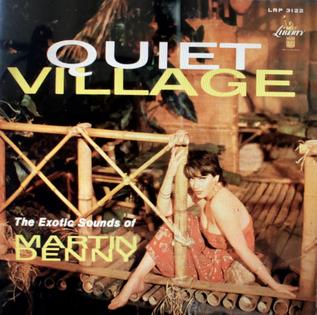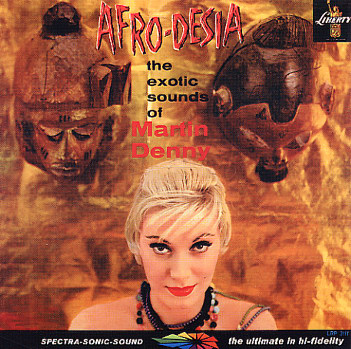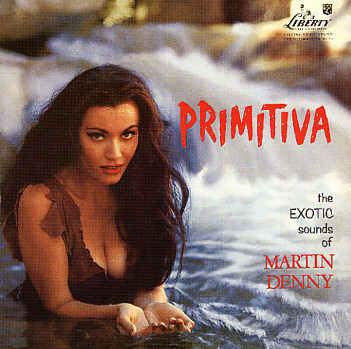Martin Denny was one of the prime practitioners of the musical style that became known as exotica (sometimes lounge music). Exotica attempted to create a sense of the wild and exotic through the invocation of another culture. Often this culture (usually Asian or Indian) was pretty much imagined by the musicians.
The Exotica album was recorded for Liberty Records in 1959, just as Hawaii was about to become the fiftieth state in the United States. As a result of listeners’ interest in the exotic sounds of the islands, Exotica became a very popular recording and began Denny’s lengthy career recording this type of music. In addition, other musicians began to play and record a similar style of music, including two of Denny’s vibes players–Arthur Lyman and Julius Wechter.
Ironically, Denny made his name playing a small combo arrangement of Les Baxter’s “Quiet Village” and became known as the ‘father of exotica,’ a title that rightfully belongs to Baxter. However, Denny did create a very credible small group sound that fit the exotica bill and his arrangements were excellent. He also had a natural connection to Hawaii having played long stints at Don the Beachcomber and the Hilton Hawaiian Village.
The Faces of Sandy Warner
The album covers for Denny’s recordings sought to visually portray the sense of seductive, alluring sensuality that his music suggested. The first dozen or so Denny albums all featured the same model, Sandy Warner, who came to be known as “The Exotic Girl.” Ms. Warner was quite fetching, as you can see here, and seemed to possess the right features to convey nearly any visual concept. In Martin Denny’s words:
“…we called one album with an African sound Afro-desia and…Sandy dyed her hair blond for the photo session; she’s seen against a background of colorful African masks. When we did Hypnotique, which is surrealistic, she had dark hair. For Primitiva, she was photographed standing waist-deep in water.”
Sandy actually made a record by the title of Steve Allen Presents Fair and Warner which is pretty rare today. It included tracks with titles like “The Girl With the Long Black Hair”, “Sunshine Face”, and “Mambo, Tango, Samba, Calypso, Cha Cha Blues”, and it sank without a trace.
It did feature notes by Martin Denny, though he admitted in a 1993 interview that “I can’t remember what I wrote”. What he wrote (in part) was:
“In the person of Sandy Warner you will find a versatile and unusual combination of beauty and talent. She has graced the covers of all my “LIBERTY” albums as the “EXOTICA” girl. In fact, it was a standing gag among most D-J’s that they were unaware there was a record in the album-liner until some time later. Sandra is a lot of woman and to top that has a warm and gracious personality. Her background in show business is most impressive. ”
Believe it or not, Sandy had a twin sister by the name of Sonia, and they reportedly had a nightclub act together for a time. They also sometimes appeared in some movies together, including appearances in Some Like It Hot(1959), Party Girl (1958) and John Boorman’s noirish Point Blank (1967). Sandy also appeared in episodes of The Fugitive and Perry Mason as well as two appearances on The Twilight Zone. From 1962-63 she played Fess Parker’s wife in the series Mr. Smith Goes to Washington.
Martin Denny continued to perform around the world until 1985 when he officially retired. Nonetheless, he reunited with Arthur Lyman in 1990 and also toured Japan, where his music had become quite popular. He was generally supportive of the exotica revival groups that came along in the 90s, many inspired by his recordings. Martin Denny died on 2 March 2005, in Hawaii Kai, Hawaii.





